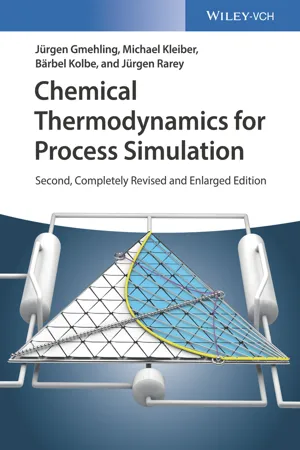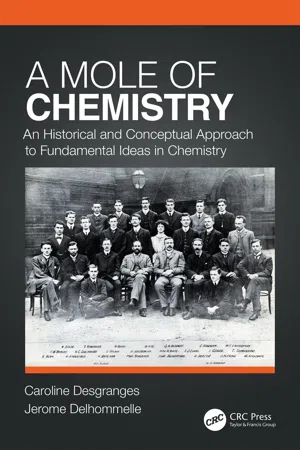Technology & Engineering
Adiabatic Expansion
Adiabatic expansion refers to the process in which a gas expands without any heat being added or removed from the system. This results in a decrease in temperature and an increase in volume. Adiabatic expansion is commonly used in engineering applications such as gas turbines and refrigeration systems.
Written by Perlego with AI-assistance
Related key terms
Related key terms
1 of 4
Related key terms
1 of 3
3 Key excerpts on "Adiabatic Expansion"
- eBook - ePub
Statistical Thermodynamics
An Information Theory Approach
- Christopher Aubin(Author)
- 2024(Publication Date)
- Wiley(Publisher)
7 Applications of Thermodynamics In Chapter 6, we worked through the mathematics required to study thermodynamic problems, setting us up with the tools to be able to study physical processes. In this chapter, we will work through various examples, calculating observables that can then allow us to test our theory. Recall we made some pretty bold assumptions (such as the fundamental postulate), and now it is time to see that physical observations are consistent with them. In most of our examples, the volume will be the only external parameter, although we will also see some other examples where different external parameters will come into play. After finishing this chapter, you should be able to understand the Adiabatic Expansion of a system, specifically an ideal gas, learn about simple processes used to cool gases (such as free expansion and the Joule–Thomson process), and understand the basics of heat engines and refrigerators. 7.1 Adiabatic Expansion The first process we will study is a thermally isolated system that is allowed to do mechanical work. Such a process has first been discussed in Section 4.6.2 (shown in Figure 4.10), and now we will consider it in more detail. Because our system is thermally isolated, there can be no heat flow into or out of the system, so (7.1) and thus via the first law, (7.2) We would like to determine how the pressure changes with the volume for an adiabatic process. In order to do this generally, let us assume the adiabatic process is also quasistatic. For a quasistatic process, we can relate the heat flow to the entropy change,, so in this case, (7.3) This way we can determine how the pressure depends upon the volume by considering the pressure as a function of volume and entropy, and we can write (7.4) where the second equality is true for an adiabatic process. Now we just crush the derivative to obtain (7.5) with the specific heat ratio defined in Eq. (6.101). Exercise 7.1 Show that Eq - eBook - ePub
- Jürgen Gmehling, Michael Kleiber, Bärbel Kolbe, Jürgen Rarey(Authors)
- 2019(Publication Date)
- Wiley-VCH(Publisher)
It can often be seen that caloric properties calculated with cubic equations of state are not very exact, and the equation has not been designed for very high pressures. Therefore, its poor result can be understood. 14.4 Adiabatic Compression and Expansion Compressors, pumps, fans, and other fluid flow engines for pressure elevation are widely applied in industry for the transport of fluids or for establishing a certain pressure to carry out a reaction or a separation. In process simulation, compressors for gases are not regarded as a simple flash, as they cannot be specified by two outlet variables. Instead, more information about the course of the change of state is necessary. For most types of compressors, it can be assumed that they are adiabatic, which means that the heat exchange with the environment does not play a major role. In the following section, the calculation route is illustrated by the adiabatic compression of a vapor. The changes in kinetic energy can be neglected in the energy balance. The calculation is divided into the reversible adiabatic calculation and the integration of losses. (1) Reversible calculation : The reversible case characterizes the process that requires the lowest power consumption. It is specified by the outlet pressure P 2 at constant entropy. According to the Second Law, the outlet temperature is calculated by the isentropic condition 14.8 In the case of an ideal gas, Eq. 14.8 leads to 14.9 with s 0 as the reference entropy, giving 14.10 For manual approximations, a temperature‐independent can be assumed, which results in 14.11 With the abbreviation, we get 14.12 and we obtain the well‐known formula 14.13 In process simulation calculations, Eq. 14.8 is directly evaluated with the corresponding equation of state to iteratively determine T 2rev via Eq - eBook - ePub
A Mole of Chemistry
An Historical and Conceptual Approach to Fundamental Ideas in Chemistry
- Caroline Desgranges, Jerome Delhommelle(Authors)
- 2020(Publication Date)
- CRC Press(Publisher)
The gas starts to expand. This first step is then called a reversible isothermal expansion. Second, the system is no longer in contact with the boiler and the gas continues to expand without any heat exchange with the surroundings. This is a reversible expansion process, and since there is no heat exchanged (ideal process), we call it a reversible Adiabatic Expansion. Third, the gas is in contact with the water from the condenser at T 2 with T 2 < T 1. The gas is then cooled down and starts to undergo compression at temperature T 2. This process is therefore a reversible isothermal compression. Fourth, the system is no longer in contact with the condenser and continues to undergo a compression without any heat exchange. This process is a reversible adiabatic compression. These processes constitute the Carnot cycle. If we follow the direction of the successive processes, we can see that we turn in a clockwise (anti-trigonometric) sense. It means that the cycle produces work! This is exactly what Newcomen and Watt had found in their experiments! Moreover, Clapeyron goes further and uses analytical mathematical formulae to describe this cycle. First, for the reversible isothermal process, the gas is modeled by an ideal gas, meaning that the variation of pressure (P) and volume (V) can be known through the famous ideal gas law: PV = nRT. In the PV plane (P as a function of V or mathematically P(V)), the equation P(V) = nRT/V is a hyperbola (a curved line between pressure, on the vertical axis, and volume, on the horizontal axis). We thus have a curved line that goes towards the right of the PV plane. Let us add that, as temperature increases, the plot for this line is farther away from the origin. Second, the reversible Adiabatic Expansion. Since the gas is assumed to be an ideal gas, we can use the Poisson equation for an ideal gas PV γ = const. Let us add that, at this time, Clapeyron is not aware of this formula, as it does not appear in his paper
Index pages curate the most relevant extracts from our library of academic textbooks. They’ve been created using an in-house natural language model (NLM), each adding context and meaning to key research topics.
Explore more topic indexes
Explore more topic indexes
1 of 6
Explore more topic indexes
1 of 4


